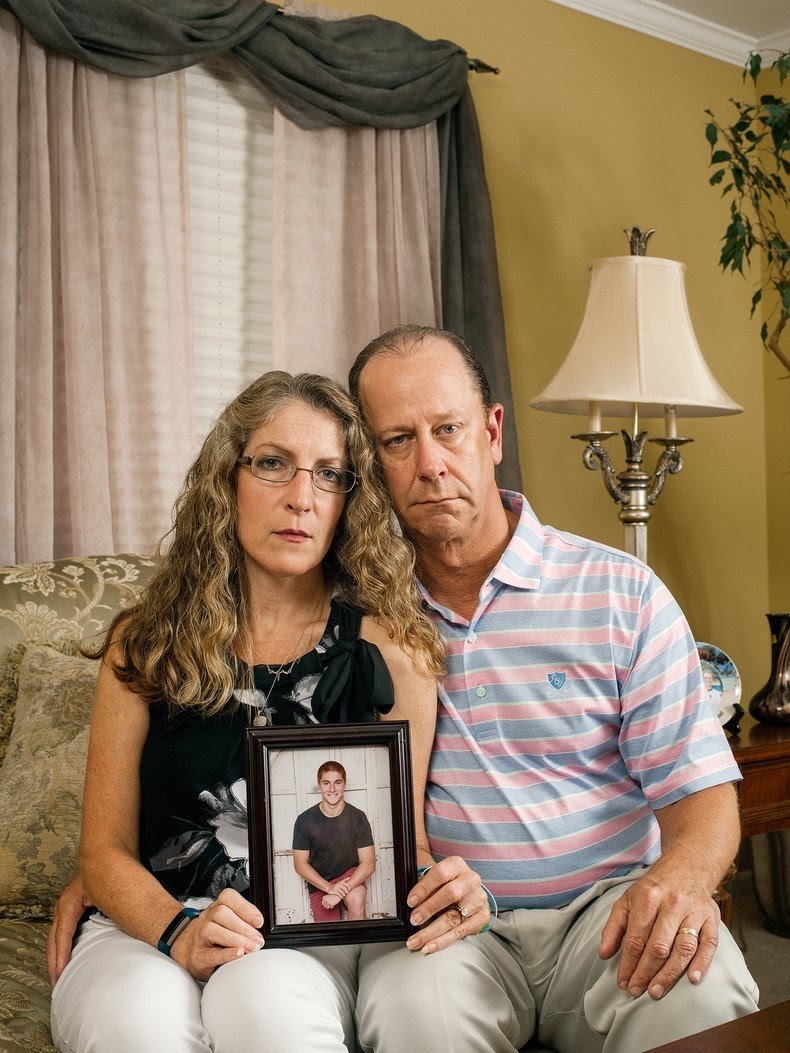MOURNING: Disturbing numbers of college students have died due to hazing, yet universities resistant to change
By Isabel Morehead, Staff Writer
On February 4, 2017, Tim Piazza, a freshman at Penn State University and fraternity pledge to Beta Theta Pi, died from traumatic injuries to his brain and spleen. These injuries resulted from being forced to drink a toxic amount of alcohol during a hazing ritual, and falling headfirst down a flight of stairs while intoxicated. This is another tragedy in a long list of college students that have died from fraternity hazing. This is a problem that has become more widespread, and yet it is not treated as a serious issue, and nothing is being done to prevent it within schools. Universities are resistant to change, especially when it comes to altering institutions that have stood firm and untouched for hundreds of years. The Greek life culture of over-drinking and dangerous hazing that is common in fraternities has caused the unfortunate death of too many students. It is the responsibility of university officials, from here forth, to fix this problem.
According to Hank Nuwer, professor of journalism at Franklin College and expert on hazing, in the past decade there have been 33 documented deaths nationwide due to fraternity hazing. Along with Piazza, the list of deaths from fraternity hazing includes Tucker Hipps, who died in 2014 after falling from a bridge during a run as part of fraternity hazing, Ryan Abele, who died in 2016 after falling down a flight of stairs, as he was told to clean the basement (as a part of a hazing ritual) while he was intoxicated, Andrew Coffey, who died in 2017 due to alcohol consumption during hazing, and Matthew Ellis, who died this year from alcohol-related causes while pledging a fraternity. Alcohol plays a large role in these deaths, as we see all these victims were intoxicated when they died, but the culture of binge drinking and dangerous hazing rituals is the reason why these deaths keep happening. Even after numerous articles have been published calling attention to this issue, and numerous universities where incidents have occurred have imposed new rules and sanctions upon offending fraternities, it doesn’t seem to be enough, as these deaths keep occurring. This is possibly because the punishments have not been harsh enough for fatal hazing rituals, because of the toxic Greek life culture of reckless behavior, or the deep-rooted allegiance to fraternities that exists within powerful groups of people in university administration. Whatever reason there is for this continued cycle of death and misconduct, serious steps must be taken to remedy this issue, before more innocent young lives are taken.
According to Doug Fierberg, a lawyer that has represented dozens of families in wrongful death and injury lawsuits against fraternities, the hazing issue is resolvable, and yet the proper steps are not being taken to end this problem: “[Students are] still dying and still getting sexually assaulted and still getting traumatically injured—and for reasons the fraternity industry could control but chooses not to”. Death from fraternity hazing has become a serious problem within schools, and yet it is still not treated as a real issue, as universities resist harsh punishments and regulations for offending fraternities. Even after all these deaths, after years of this dangerous behavior being tolerated, university officials and alumnis alike are still defending fraternities: “I can’t imagine a fraternity-free Penn State,” says Damon Sims, the school’s vice president for student affairs: “The fraternity and sorority system is very important to us. It’s very important to this university. It’s longstanding, has a very positive history. It’s done a lot of good things for individuals and for the community, so all this talk about a fraternity- and sorority-free Penn State is really not [a] conversation that I’ve been engaged in, and I’d rather others not engage in it.” The institution and tradition of fraternities is so powerful that even after such horrible events have occurred because of fraternal influence, they can continue the same reckless behavior. This is partly because of the powerful influence of famous past-fraternity member alumni who have influential sway over their alma maters. These famous fraternity alumni, such as Supreme Court Justice Neil Gorsuch, 155 Congressional lawmakers, and at least four of Donald Trump’s cabinet members, fondly remember their fraternity days, and wish to keep the institution that they loved alive, convincing university administrators to dole out more lenient punishment to fraternities. These alumni hold serious swaying power over decisions regarding fraternities, and even though the accusations against fraternities may mount higher, this institution will stay in place as long as these people are allowed to influence such decisions.
Fraternities have been around since the 1800s, created as a way for young men to escape the discipline and religious strictures of schools. These organizations were created with earnest intentions, and have been essential in creating principled leaders and strengthening brotherhood, as described by fraternity members and defenders. But in recent years, this tradition meant to foster morally upright, philanthropic young leaders, has turned into a toxic environment filled with binge drinking, over-indulgence, and dangerous behavior. This new culture of heavy alcohol consumption, hazing as a rite of passage, and the safety of knowing that no matter what happens, their actions will always be excused, has caused fraternity members to die in disturbingly large numbers. This culture of recklessness and subsequent excuse has proven to be extremely dangerous, and actions must be taken soon to prevent further casualties.

